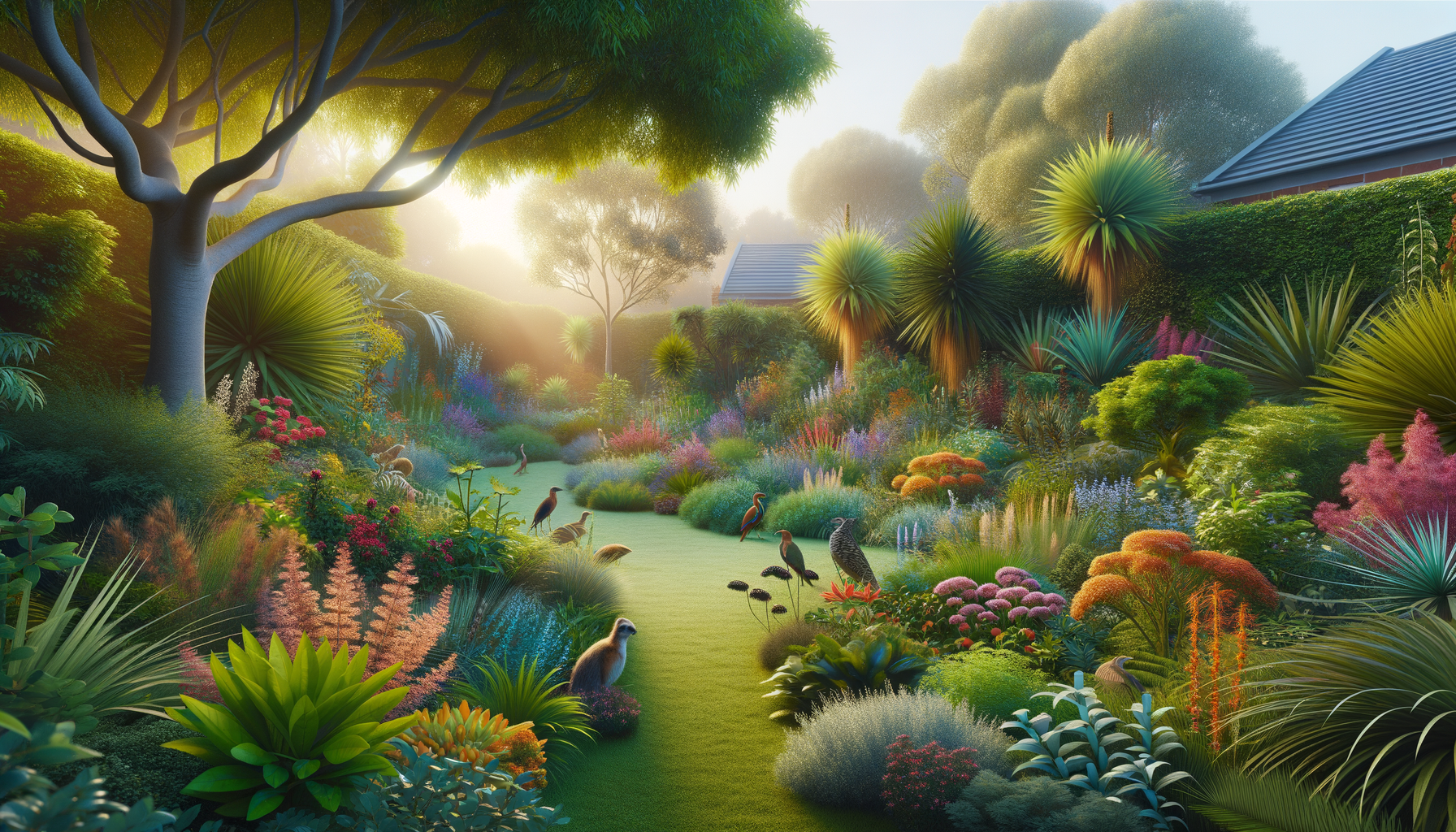
How I Created a Low Maintenance Garden with Local Native Plants
Low Maintenance Garden Ideas
Creating a low maintenance garden is a dream for many busy homeowners. The key lies in choosing the right plants and design elements that require minimal care yet provide maximum aesthetic appeal. Start by selecting drought-tolerant plants that thrive with little water. Succulents, ornamental grasses, and certain types of shrubs are excellent choices. These plants not only conserve water but also reduce the need for frequent watering, making them ideal for low maintenance gardens.
Incorporate ground covers like creeping thyme or clover, which suppress weeds and eliminate the need for constant weeding. Mulching is another effective strategy; it retains moisture, reduces weeds, and adds nutrients to the soil as it breaks down. Consider using hardscape elements such as gravel paths, stone borders, and raised beds to create structure and interest without the upkeep of traditional lawns.
Automation can further ease garden maintenance. Install a drip irrigation system to ensure efficient watering, and use timers to control lighting and watering schedules. By integrating technology with thoughtful plant selection, you can enjoy a beautiful and sustainable garden without the constant upkeep.
Native Plants for Landscaping
Native plants offer numerous benefits for landscaping, making them a smart choice for environmentally conscious gardeners. These plants are adapted to local climate and soil conditions, requiring less water, fertilizer, and pest control than non-native species. This not only reduces maintenance but also supports local ecosystems by providing habitat for native wildlife.
Consider incorporating a variety of native plants to create a diverse and resilient landscape. For instance, if you live in a region with hot, dry summers, look for drought-tolerant natives like lavender, yarrow, and sagebrush. In wetter climates, ferns, hostas, and wildflowers can thrive. The diversity of native plants ensures year-round interest and color in your garden.
Moreover, native plants can help prevent soil erosion and improve soil quality. Their deep root systems stabilize the soil and promote water infiltration, reducing runoff and the risk of flooding. By choosing native plants, you not only create a beautiful and sustainable landscape but also contribute to the health of the local environment.
How to Attract Local Wildlife
Attracting local wildlife to your garden enriches the ecosystem and offers a dynamic and lively environment. Start by providing basic needs such as food, water, and shelter. Plant a variety of flowering plants to attract pollinators like bees and butterflies. Native shrubs and trees offer food and nesting sites for birds.
Water features like birdbaths or small ponds can attract a range of wildlife, from birds to amphibians. Ensure these water sources are clean and accessible, with shallow areas for smaller creatures. Incorporate features like log piles or rockeries to provide shelter and breeding sites for insects and small mammals.
Creating a garden that attracts wildlife also involves reducing chemical use. Avoid pesticides and herbicides, which can harm beneficial insects and disrupt the food chain. Instead, encourage natural pest control by attracting predatory insects and birds. By fostering a garden that supports local wildlife, you create a balanced ecosystem that thrives with minimal human intervention.
Designing with Native Plants for Low Maintenance
Designing a garden with native plants is both an art and a science. It requires a keen understanding of plant characteristics and how they interact with the environment. Start by assessing your garden’s conditions, such as soil type, sunlight, and moisture levels. Choose native plants that naturally thrive in these conditions to minimize the need for amendments and watering.
Plan your garden layout to mimic natural ecosystems. Group plants with similar needs together, creating microclimates that support diverse species. Use layers to add depth and interest, with taller plants providing shade and shelter for smaller ones. This not only enhances the visual appeal but also creates habitats for different wildlife species.
Incorporate native grasses and ground covers to fill gaps and reduce weeds. These plants often require little to no mowing, reducing maintenance further. By designing with native plants, you create a harmonious landscape that requires minimal intervention and supports local biodiversity.
Benefits of a Low Maintenance, Native Plant Garden
Creating a garden that combines low maintenance with native plants offers numerous benefits. Not only does it save time and resources, but it also supports local ecosystems and biodiversity. Native plants provide essential habitat and food sources for local wildlife, from pollinators to birds and mammals.
Such gardens are more resilient to climate fluctuations and pests, reducing the need for chemical interventions. This leads to healthier soil and a more sustainable environment. Additionally, native plant gardens often require less water and fertilizer, resulting in lower maintenance costs and environmental impact.
By embracing native plants and low maintenance strategies, you create a garden that is beautiful, sustainable, and beneficial to both you and the environment. It’s a rewarding approach that transforms your outdoor space into a thriving ecosystem.